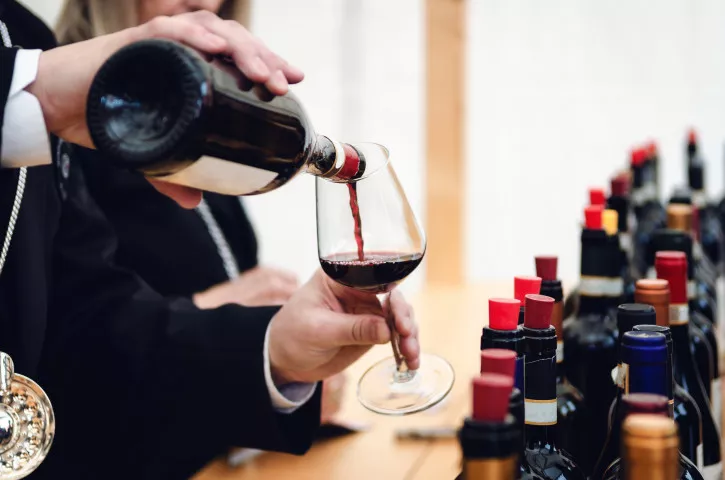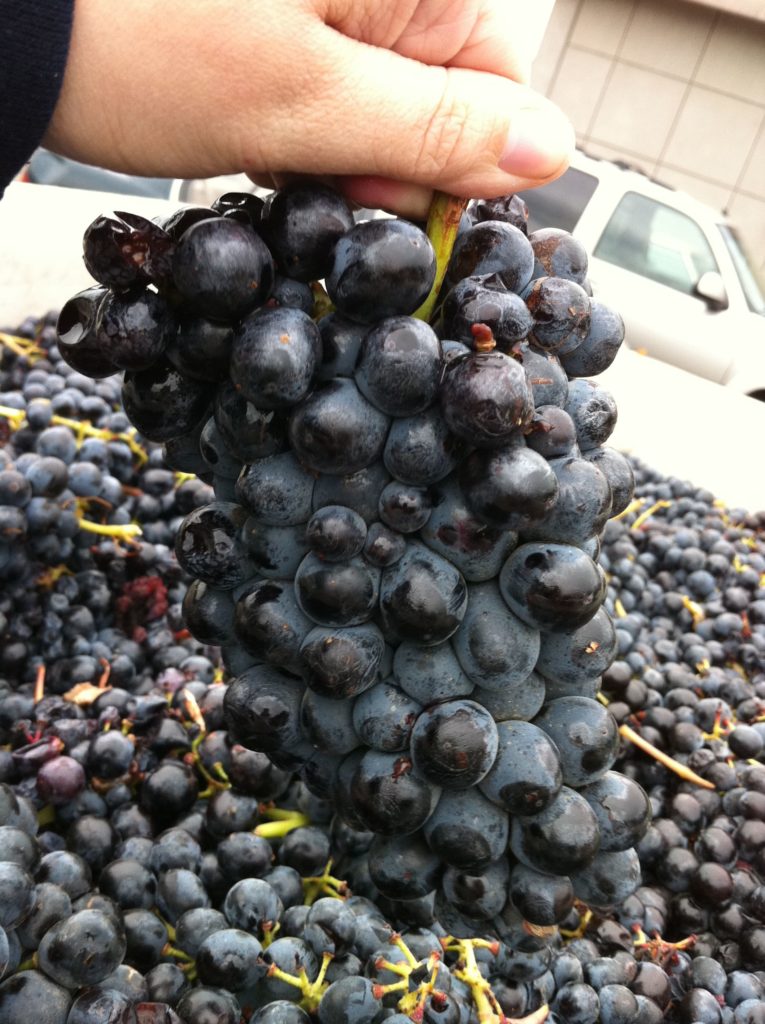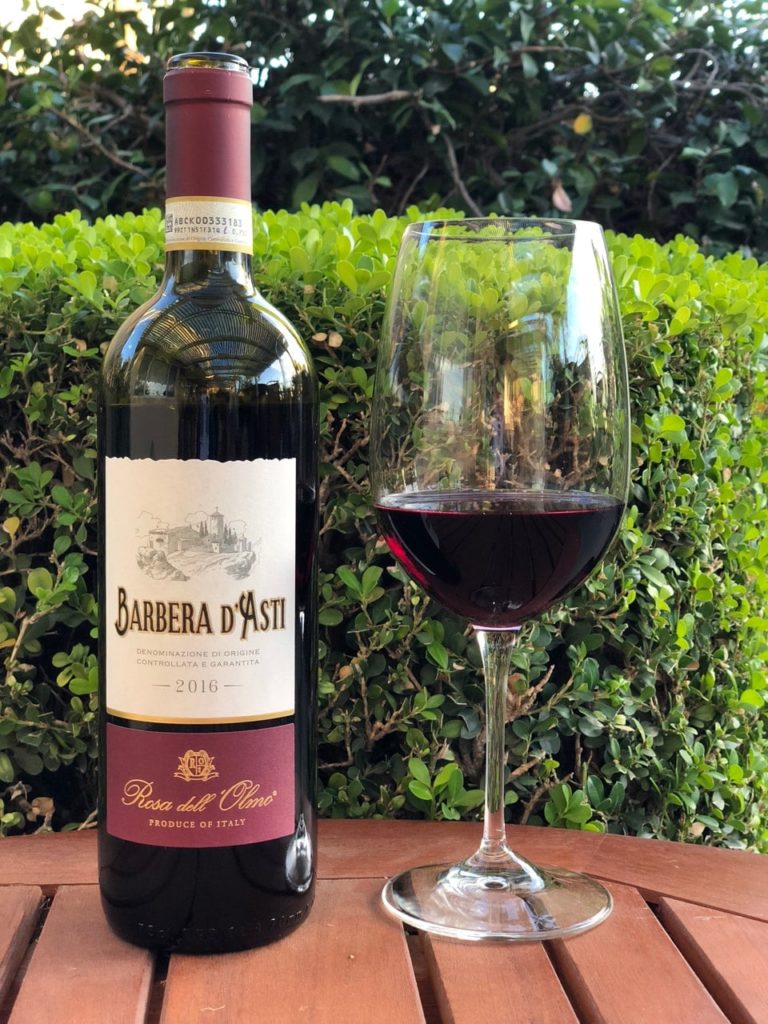Barbera wine, a red Italian grape range, stands as a testament to the wealthy tapestry of flavors woven with the aid of the vineyards of Italy. In this complete guide, we’ll delve into the origins, traits, and numerous expressions of Barbera Wines. As of 2000, Barbera ranked as the 1/3 maximum-planted pink grape range in Italy, trailing only Sangiovese and Montepulciano. Let’s uncork the bottle and embark on a journey through the sector of Barbera.
The Origin and Characteristics of Barbera Wine Grapes:
Barbera grapes discover their origins within the solar-drenched landscapes of Italy, often thriving within the areas of Piedmont, Emilia-Romagna, and Lombardy. The historic presence of Barbera may be traced again centuries, with the grape adapting and evolving to come to be one of Italy’s maximum widely cultivated sorts. Its adaptability to exceptional climates and soils has contributed to its occurrence in Italian vineyards.


The grape’s name itself guidelines its ability foundation, with some theories suggesting a derivation from the Latin word ‘barbarus,’ reflecting its historical roots. Barbera has weathered the changing tides of winemaking traditions, persisting as a symbol of Italian viticultural history.
Key Characteristics of Barbera Grapes:
- Deep Color: Barbera grapes are renowned for imparting an intense shade to the ensuing wines. This colorful hue, starting from ruby to garnet, adds to the visible appeal of Barbera Grapes Wine.
- Full Body: One of the defining features of Barbera wines is their full-bodied nature. The grape contributes to wines with a sturdy and wealthy texture, growing a satisfying mouthfeel that lingers on the palate.
- Low Tannins: Unlike a few other pink grape types, Barbera is understood for its decreased tannin levels. This feature makes Barbera Grapes Wine approachable, especially in teenagers, with a clean and less astringent taste.
- High Acidity: Perhaps the maximum distinguishing trait of Barbera grapes is their high acidity levels. This acidity provides brightness and freshness to the wines, balancing the richness of the body and contributing to their exquisite growing old capability.
- Versatility: Barbera’s versatility extends beyond its adaptability in the vineyard. Winemakers respect the grape for its ability to showcase various winemaking techniques, taking into consideration a spectrum of patterns from unoaked and fruity to barrel-elderly and complicated.
Winemaking Techniques for Barbera Wines:
Unoaked and Fruity Styles:
- Fermentation in Stainless Steel: Some winemakers opt for stainless steel fermentation vessels to maintain the natural fruit flavors of Barbera. The non-reactive nature of stainless steel ensures that the grape’s essence is captured without affecting the oak.Italian red wine
- Early Bottling: To keep the wine’s youthful and colorful qualities, Barbera Grapes wines crafted within the unoaked fashion are frequently bottled in advance. This minimizes publicity of growing old, allowing the fruit-ahead characteristics to take the middle stage.
- Temperature Control: Strict temperature management for the duration of fermentation is essential in preserving the intense acidity and fruitiness of Barbera Grapes Wine. Cool fermentation prevents the loss of unstable aromas and guarantees a crisp, clean final product.
Barrel-Aged and Complex Variations:
- Oak Aging: Winemakers looking to feature depth and complexity to Barbera Grapes Wine frequently flip to very well growing older. The choice among French and American alright barrels imparts wonderful flavors, with French alright contributing extra subtle notes and American alright supplying bolder traits.
- Extended Maceration: Some Barbera wines undergo extended maceration, a system wherein the grape skins stay in touch with the juice for a prolonged duration after fermentation. This technique enhances coloration extraction, tannin shape, and typical complexity.
- Blending: Winemakers can also pick out a mixture of Barbera with other grape varieties to create particular expressions. For example, a mix of Shiraz and Barbera, as seen in wines like Vista Shiraz Barbera, can integrate the spice and shape of Shiraz with the colorful acidity of Barbera.
- Aging Potential: Barbera Grapes Wine, whilst subjected to careful growing older, can evolve gracefully over the years. Barrel-aged Barberas, including Michele Chiarlo Cipressi Nizza, exhibit the grape’s capability to increase nuanced flavors and textures while getting old, making them cellar-worthy alternatives.
Harvest Timing:
- Late Harvest: Opting for an overdue harvest lets winemakers harness ripened grapes with heightened sugar levels. This can result in wines with extended alcohol content and an extra said fruit profile.
- Selective Harvesting: Winemakers might also selectively harvest grapes at different ripeness levels to gain a blend of flavors, balancing acidity and sweetness.
Notable Barbera Wines: A Tasting Journey:
G.D. Vajra Barbera D’alba Doc:
Winery Background:
- Rooted within the Piedmont region, the G.D. Vajra Circle of Relatives winery is renowned for its dedication to quality and culture.
Tasting Notes:
- Delicate aromas of crimson berries and violets.
- Vibrant acidity that characterizes the Barbera grape.
- Well-integrated tannins create a harmonious palette.
Winemaking Approach:
- Stainless steel fermentation to maintain fruit purity.
- Minimal influence for a sparkling and expressive profile.
First Drop Wines Moderno Barbera 2021:
Versatility in Winemaking:
- First Drop Wines exemplifies the versatility of Barbera, crafting a wine that can be enjoyed in various patterns.
Tasting Experience:
- Bright red fruit flavors with a hint of spice.
- Medium-bodied, making it approachable and food-friendly.
- Expressive acidity contributes to a lively end.
Winemaking Techniques:
- Showcasing the adaptability of Barbera in exclusive winemaking styles.
- A birthday celebration of the grape’s versatility and current winemaking strategies.
Barbera del Monferrato:
Purity of Expression:
- A purple wine made with 100% Barbera grapes, emphasizing the purity of the varietal.
Aged in Steel Containers:
- Aging in steel containers preserves the freshness of the fruit and accentuates the herbal acidity.
Tasting Profile:


- Intense cherry and blackberry aromas.
- Crisp acidity with a smooth and simple finish.
- An outstanding representation of Barbera’s unadulterated personality.
Michele Chiarlo Cipressi Nizza:
Award-Winning Elegance:
- Recognized with a couple of awards, Michele Chiarlo Cipressi Nizza is a testament to the excellence viable with Barbera.
Limited Production:
- Produced in small quantities, making sure to focus on quality over quantity.
Tasting Excellence:
- Rich and complicated with layers of dark fruit, licorice, and diffused oak.
- Silky tannins and a lingering end.
- A sophisticated Barbera that evolves with aging.
Vista Shiraz Barbera:
Innovative Blend:
- A combination of Shiraz and Barbera showcases the artwork of blending grape sorts.
French Oak Aging:
- Aged for three hundred and 65 days in French o. K. barrels, adding intensity and structure.
Tasting Harmony:
- Spicy notes from Shiraz complemented Barbera’s brilliant acidity.
- Velvety texture with a well-balanced end.
Barbera Palas:
Fruity and Fragrant:
- Barbera Palas is widely known for its fruity and cherry-scented profile.
Ripe Red-Berried Fruit:
- Bursting with ripe purple berries, creating an inviting aroma.
Accessible Delight:
- A wine that embodies Barbera’s freshness and vibrancy, ideal for normal entertainment.
Pairing Barbera Wines: Culinary Delights:
General Guidelines for Pairing Barbera Grapes Wine:
- Rich Tomato-based Totally Dishes: Barbera’s acidity complements the acidity in tomato-based total sauces, making it a perfect companion for dishes like pasta with marinara or Bolognese sauce.
- Grilled Meats: The strong frame of Barbera wines stands up well to the flavors of grilled meats. Consider pairing it with fish fry, grilled sausages, or a hearty steak.
- Mushroom Dishes: Barbera’s earthy undertones make it a pleasing match for mushroom-based total dishes. Try it with a mushroom risotto or a savory mushroom and herb-infused pizza.
- Hard Cheeses: The tannins in Barbera Grapes Wine supplement the richness of hard cheeses. Serve it alongside a platter of elderly Parmesan, Pecorino, or Asiago.
- Poultry and Game Birds: Barbera’s versatility extends to chicken, mainly roasted fowl or game birds. The wine’s acidity cuts through the richness of the beef.
- Herb-infused Dishes: Dishes with fresh herbs, which include rosemary or thyme, harmonize well with the natural notes often discovered in Barbera Grapes Wine.
Specific Pairing Recommendations:
- G.D. Vajra Barbera D’alba Doc: Pair with traditional Piedmontese dishes like Tajarin pasta with a wealthy meat ragu or braised red meat.
- First Drop Wines Moderno Barbera 2021: Versatile sufficient to accompany a lot of dishes, from grilled sausages and lamb chops to highly spiced tomato-based pasta dishes.
- Barbera del Monferrato: Enjoy with classic Italian antipasti, prosciutto, and aged cheeses. Its bright acidity will reduce via the richness.
- Michele Chiarlo Cipressi Nizza: A wine of elegance, it pairs superbly with truffle-infused dishes, grilled lamb, or a nicely aged Gouda.
- Vista Shiraz Barbera: The mixture of Shiraz and Barbera makes it a splendid fit for hearty dishes like beef stew or a peppery pork stir-fry.
- Barbera Palas: Perfect for informal, normal pairings which include Margherita pizza, pasta with pesto, or an easy caprese salad.
Barbera in the Italian Wine Landscape:
Barbera, a venerable purple grape range, is deeply woven into the wealthy ancient tapestry of Italian winemaking. Its roots trace again to ancient times, thriving in the sun-kissed regions of Piedmont, Emilia-Romagna, and Lombardy. The call ‘Barbera’ itself tips at its age-vintage origins, suggesting a connection to the Latin word ‘barbarus’ and reflecting the grape’s enduring presence for a long time.
As Italy’s 1/3 most-planted purple grape variety as of 2000, Barbera has performed an essential function in the country’s vinicultural history. The historical landscapes of those areas echo the whispers of generations of winemakers who’ve cautiously cultivated and crafted wines from this terrific grape.
Modern Significance:
- Versatility in Winemaking: Barbera’s adaptability to numerous winemaking styles, from unoaked freshness to complex barrel-elderly expressions, places it at the vanguard of cutting-edge winemaking innovation.
- Global Recognition: The international popularity of Barbera signifies its relevance in worldwide markets, showcasing its popularity and recognition among a diverse variety of wine fans.


- Sustainability Focus: Embracing sustainable viticulture practices, Barbera displays a contemporary commitment to eco-aware techniques, aligning with the latest values of environmental obligation.
- Technological Integration: The integration of generation in viticulture and winemaking ensures precision and consistency, enhancing Barbera’s modern manufacturing methods and pleasant requirements.
- Educational Engagement: Educational initiatives and wine tourism opportunities centered around Barbera contribute to a deeper knowledge of the grape, fostering a connection between customers and the cultural and historical past of Italian winemaking.
Distinctive Characteristics of Barbera:
- Intense Color: Barbera Grapes Wine is recognized for its deep and vibrant ruby to garnet colors, developing an attention-grabbing visible attraction.
- Full-Bodied Nature: Exhibiting a sturdy and weighty texture, Barbera wines own a full-bodied character that contributes to a satisfying and giant palate experience.
- Low Tannins: Distinguished by low tannin levels, Barbera Grapes Wine provides a smooth and approachable flavor with much less astringency, making them fun, especially for teens.
- High Acidity: Barbera grapes are characterized by high acidity, imparting an energetic and clean best to the wines, and balancing the richness of the body.
- Versatility: Demonstrating versatility in each winery and winemaking technique, Barbera can yield wines with various styles, from unoaked and fruity to barrel-aged and complex expressions.
Role of Barbera in Modern Winemaking:
- Innovative Techniques: Barbera performs a pivotal function in the latest winemaking, with vintners employing innovative strategies including chrome steel fermentation and prolonged maceration to focus on its adaptability.
- Versatile Styles: Winemakers leverage Barbera’s versatility, crafting a spectrum of patterns, from unoaked and fruity expressions to barrel-aged and complex versions, catering to numerous client choices.
- Blending Possibilities: Barbera’s compatibility with other grape types makes it a treasured aspect in blends, showcasing its potential to harmonize with exceptional varietals and make a contribution to the complexity of the very last wine.
- Adaptation to Trends: Barbera demonstrates a capability to adapt to current wine developments, aligning with purchaser choices for sustainability, organic practices, and a focus on terroir expression.
- Global Market Presence: The worldwide popularity of Barbera Grapes Wine reflects their contemporary importance, with the grape keeping a sturdy presence in global markets and contributing to Italy’s recognition as a main wine-generating kingdom.
Notable Barbera Wines: A Showcase of Excellence:
G.D. Vajra Barbera D’alba Doc:
- Winery Excellence: G.D. Vajra’s dedication to niceness is obvious in this wine, offering sensitive purple berry aromas, vibrant acidity, and minimal very good influence.
First Drop Wines Moderno Barbera 2021:
- Versatility Spotlight: This wine exemplifies Barbera’s versatility, supplying bright crimson fruit flavors, medium frame, and expressive acidity for a flexible and food-friendly revel.
Barbera del Monferrato:
- Purity of Expression: A 100% Barbera Grapes Wine aged in metal boxes, showcasing the purity of the varietal with severe cherry and blackberry aromas and a clean end.
Michele Chiarlo Cipressi Nizza:
- Award-Winning Elegance: Limited production and more than one award highlight the beauty of this Barbera, providing wealthy complexity, silky tannins, and diffused influence.
Vista Shiraz Barbera:
- Innovative Blend: This wine introduces a revolutionary combo of Shiraz and Barbera, aged in French o.K.For three hundred and 65 days, resulting in a harmonious mixture of highly spiced notes and velvety texture.
Barbera Palas:
- Everyday Delight: Celebrated for its fruity and cherry-scented profile, Barbera Palas is an available wine perfect for ordinary amusement, embodying Barbera’s freshness and vibrancy.
Trends and Innovations in Barbera Wines:
Sustainable Viticulture:
- Trend: Increasing consciousness of sustainable and eco-friendly viticulture practices.
- Innovation: Adoption of natural and biodynamic techniques to decrease environmental impact.
Blending with Other Varietals:
- Trend: Growing hobby in blending Barbera with different grape sorts.
- Innovation: Creation of unique blends, such as Vista Shiraz Barbera, showcasing modern mixtures and taste profiles.
Limited Production and Rarity:
- Trend: Emphasis on constrained manufacturing for premium nice.
- Innovation: Wines like Michele Chiarlo Cipressi Nizza, are produced in small portions, gaining attention for their rarity and exclusivity.
Experimentation with Aging Techniques:
- Trend: Winemakers experimenting with distinct getting old techniques.
- Innovation: Extended maceration, very well getting older versions, and exploring numerous maturation strategies to create wines with wonderful individuals.
Global Recognition and Market Expansion:
- Trend: Increasing global recognition of Barbera wines.
- Innovation: Ongoing efforts to increase marketplace presence, introducing Barbera to new purchasers and markets past traditional areas.
Additional Tips:
- Vintages Matter: Pay attention to the old year when selecting Barbera Grapes Wine. While some are supposed to be enjoyed younger and sparkling, others may additionally benefit from some years of getting older. Research the precise traits of the vintage to beautify your tasting experience.
- Explore Different Regions: Barbera’s adaptability extends beyond its native areas. Explore Barbera wines from specific Italian regions to discover how terroir affects the grape’s expression. Piedmont may be traditional, however, Lombardy and Emilia-Romagna also offer exciting variations.
- Temperature Matters: Serve Barbera Grapes Wine at the proper temperature. Slightly chilled (around 55-60°F or 12-15°C) complements the clean aspects of young Barbera, even as a slightly hotter temperature (60-65°F or 15-18°C) can convey the complexities in elderly Barbera.
- Decant for Complexity: Consider decanting Barbera Grapes Wine, mainly for people with a huge aging capacity. This aeration procedure can help open up the wine, permitting its flavors and aromas to evolve and turn out to be extra expressive.
- Experiment with Food Pairings: Don’t shy away from experimenting with numerous food pairings. Barbera’s versatility allows it to complement a huge range of cuisines, from Italian classics to worldwide dishes. Explore one-of-a-kind taste profiles to locate your chosen pairing.
Conclusion:
In the end, Barbera Wine emerges as a fascinating protagonist in the grand narrative of Italian winemaking, seamlessly blending culture and innovation. Its historical origins, deeply rooted in areas like Piedmont, Emilia-Romagna, and Lombardy, echo through the centuries. As of 2000, ranking as the third maximum-planted crimson grape in Italy, Barbera stays under dynamic pressure, adapting to fashionable winemaking practices. The numerous expressions showcased by using high-quality Barbera wines, from G.D. Vajra to Michele Chiarlo, reflect the grape’s versatility and the artistry of cutting-edge vintners.
Whether loved in unoaked freshness or complex barrel-elderly forms, Barbera’s deep shade, full body, and excessive acidity promise an exploration of flavors. As we toast to Barbera, we have fun now not only a grape variety but a cultural legacy, constantly evolving in each sip, embodying the essence of Italy’s vinicultural richness. Cheers to the undying appeal of Barbera!
FAQs:
Q1: What is Barbera wine, and what makes it specific?
A1: Barbera Grape Wines is a pink Italian wine crafted from the Barbera grape variety. What makes it precise is its versatility, showing each full-bodied and mild-bodied traits. Barbera is understood for its deep shade, excessive acidity, and capability to be crafted in diverse winemaking patterns.
Q2: Which areas in Italy are regarded for generating Barbera Grapes Wine?


A2: Barbera grapes thrive on the whole within the regions of Piedmont, Emilia-Romagna, and Lombardy. While Piedmont is the traditional and maximum famend location, exploring Barbera grape wines from one-of-a-kind areas provides numerous tasting experiences.
Q3: What are the key traits of Barbera Wine?
A3: Barbera grapes are characterized by their deep color, complete body, low tannins, and high acidity. These characteristics contribute to the grape’s adaptability in winemaking and its capability to supply wines with diverse flavor profiles.
Q4: How must Barbera grape wine be served?
A4: Barbera wines are exceptionally served, slightly chilled for young and fresh variations (around 55-60°F or 12-15°C) and barely warmer for elderly wines (60-65°F or 15-18°C). This enhances the wine’s expressive qualities and enhances its shape.
Q5: Can Barbera Grapes Wine age well?
A5: Yes, many Barbera grape wines have incredible aging capacity. While some are crafted for immediate leisure, others, particularly the ones subjected to very well-being, can evolve gracefully over time, gaining complexity and depth.
READ MORE: How to Make a Carajillo: The Ultimate Guide to Crafting the Perfect Coffee Cocktail
